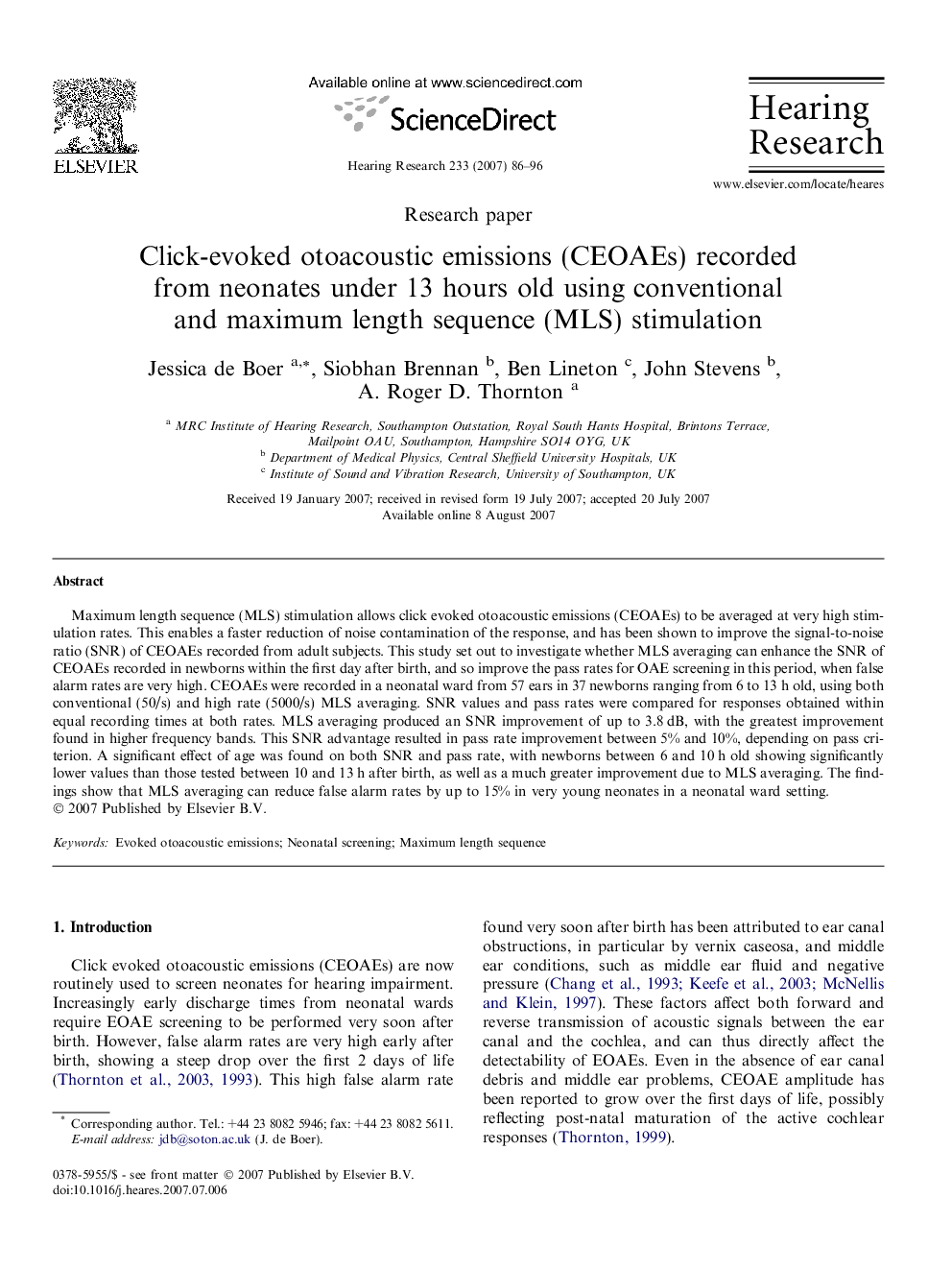| Article ID | Journal | Published Year | Pages | File Type |
|---|---|---|---|---|
| 4356172 | Hearing Research | 2007 | 11 Pages |
Abstract
Maximum length sequence (MLS) stimulation allows click evoked otoacoustic emissions (CEOAEs) to be averaged at very high stimulation rates. This enables a faster reduction of noise contamination of the response, and has been shown to improve the signal-to-noise ratio (SNR) of CEOAEs recorded from adult subjects. This study set out to investigate whether MLS averaging can enhance the SNR of CEOAEs recorded in newborns within the first day after birth, and so improve the pass rates for OAE screening in this period, when false alarm rates are very high. CEOAEs were recorded in a neonatal ward from 57 ears in 37 newborns ranging from 6 to 13Â h old, using both conventional (50/s) and high rate (5000/s) MLS averaging. SNR values and pass rates were compared for responses obtained within equal recording times at both rates. MLS averaging produced an SNR improvement of up to 3.8Â dB, with the greatest improvement found in higher frequency bands. This SNR advantage resulted in pass rate improvement between 5% and 10%, depending on pass criterion. A significant effect of age was found on both SNR and pass rate, with newborns between 6 and 10Â h old showing significantly lower values than those tested between 10 and 13Â h after birth, as well as a much greater improvement due to MLS averaging. The findings show that MLS averaging can reduce false alarm rates by up to 15% in very young neonates in a neonatal ward setting.
Related Topics
Life Sciences
Neuroscience
Sensory Systems
Authors
Jessica de Boer, Siobhan Brennan, Ben Lineton, John Stevens, A. Roger D. Thornton,
